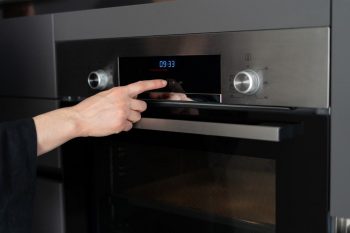
In the quest to find the perfect microwave for your kitchen, you may have come across microwaves of different sizes and wattages, including 1.7 and 1.9 cubic feet models. But what exactly do these numbers mean, and how do they impact the microwave’s performance and suitability for your needs? This comprehensive guide will delve into the differences between 1.7 and 1.9 microwaves, discussing their capacities, wattages, features, and more.
The main difference between 1.7 and 1.9 microwaves is their size and capacity. A 1.7 cubic feet microwave typically has a capacity of approximately 48 liters, suitable for regular-sized dinner plates and medium-sized dishes. In contrast, a 1.9 cubic feet microwave has a larger capacity of approximately 53 liters, accommodating larger dishes or multiple dishes at once. Additionally, 1.9 cubic feet microwaves often have a higher wattage, meaning they can heat or cook food more quickly and evenly. They may also have more advanced features and are generally more expensive.
Capacity: A Matter of Size
The primary difference between 1.7 and 1.9 microwaves lies in their cubic foot capacity. A 1.7 cubic feet microwave typically has a capacity of approximately 48 liters, suitable for regular-sized dinner plates and medium-sized dishes. On the other hand, a 1.9 cubic feet microwave typically has a capacity of approximately 53 liters, accommodating larger dishes or multiple dishes at once.
Wattage: Power and Efficiency
The wattage of a microwave determines its cooking power and efficiency. While the wattage can vary between different models and brands, a 1.9 cubic feet microwave generally has a higher wattage than a 1.7 cubic feet microwave. This means it can heat or cook food more quickly and evenly. Most recipes are designed for microwaves with 700-1,000 watts of power. Microwaves with wattages below 700 are slower and may not cook evenly, while those with higher wattages can cook or heat up large meals more quickly.
Features: From Basic to Advanced
The features of a microwave depend on the specific model and brand. Some 1.9 cubic feet microwaves come with advanced features like sensor cooking, which automatically adjusts cooking times based on the humidity coming from the food. They may also offer convection cooking, combining microwave cooking with a convection oven for faster and more even cooking. Some models even have additional features like steam cooking or smart connectivity. However, these features may not be present in all 1.7 cubic feet microwaves.
Price: What’s the Deal?
Generally, 1.9 cubic feet microwaves are more expensive than 1.7 cubic feet microwaves. This is due to their larger size, higher wattage, and potentially more advanced features. However, the price can vary significantly depending on the brand, model, and retailer. Therefore, it’s crucial to compare specific models and consider your budget and needs when choosing a microwave.
Cooking Time: Faster or Slower?
The cooking time in a microwave oven depends on its power output and the type of food being cooked. A higher power output allows the microwave oven to heat the food more quickly and efficiently. Therefore, a 1.9 cubic feet microwave with higher wattage will generally have a shorter cooking time compared to a 1.7 cubic feet microwave with lower wattage.
Conclusion
When choosing between a 1.7 and 1.9 microwave, consider factors such as your kitchen space, cooking needs, budget, and the microwave’s features. Both sizes have their advantages and can be a great addition to your kitchen. However, a 1.9 cubic feet microwave, with its larger capacity and potentially higher wattage and advanced features, can provide more cooking flexibility, especially for larger households or those who frequently cook large meals. On the other hand, a 1.7 cubic feet microwave is a compact and efficient choice for smaller kitchens or those with simpler cooking needs. Remember, the best microwave for you is the one that fits your specific needs and preferences.
Frequently Asked Questions
How does the size of the microwave affect its power consumption?
The size of the microwave doesn’t directly affect its power consumption. Power consumption is more directly tied to the microwave’s wattage. Higher wattage microwaves consume more power but they also heat food more quickly.
Can a 1.7 cubic feet microwave have the same wattage as a 1.9 cubic feet microwave?
Yes, a 1.7 cubic feet microwave can have the same wattage as a 1.9 cubic feet microwave. The cubic feet measurement refers to the internal size or capacity of the microwave, while the wattage is a measure of its power. The two are not directly correlated.
What is sensor cooking and how does it work?
Sensor cooking is a feature found in some microwaves that automatically adjusts cooking times and power levels based on the humidity that the food releases. It uses humidity sensors to detect steam from the food and then adjusts the cooking time accordingly to prevent overcooking or undercooking.
What is the average lifespan of a microwave?
The average lifespan of a microwave is about 10 years. However, this can vary significantly depending on factors such as the brand, usage, and maintenance.
Can I use a microwave with a higher wattage than recommended in a recipe?
Yes, you can use a microwave with a higher wattage than what is recommended in a recipe, but you’ll need to adjust the cooking time to avoid overcooking. A higher wattage microwave will cook food faster. It’s typically recommended to reduce cooking time by about 25% for every 200 watts of additional power.











